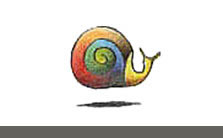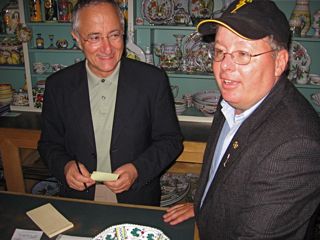 |
| Photo: U.S. Department of Agriculture |
There is a presentation tonight at the Grange at 7 pm -
Anne Mossness worked in the waters of Puget Sound and Alaska as a crewman and then longtime skipper on her own commercial fishing vessel, just like her father before her. Anne is also a parent, and - like her mother, a member of Seattle's legendary Halibut Wives - she is a powerful and articulate advocate for the wild sustainable fisheries of the Pacific Northwest, and for the many sustainable jobs and communities those fisheries support.Anne founded the Go Wild Campaign (email eatwildfish@aol.com)
Anne will be at the Friday Harbor Grange building tonight, Wednesday evening, at 7 pm to give a talk on GMO labeling initiative 522 on the November WA state ballot.
More from Land & Sea:
As parents, many of us hope our children have the chance to grow up in areas with strong local economies and sustainable jobs. In the Pacific Northwest, economies with staying power are built on strong and healthy natural resources. That is why it's crucial our sustainable resources are maintained at healthy levels, with an awareness of the destruction that can result from short term and short-sighted profit making schemes.
A company known as Aqua Bounty has taken genes from an eel-like creature called an ocean pout, mixed those with growth hormones of a Chinook (King) salmon and "fired" the mix into the DNA strand of another salmon breed, the Atlantic salmon. These genes have to be fired into the DNA strand - that is, forced into the strand - in a lab, because left alone in nature they could not mix. That's what "genetic modification" is. It differs completely from natural "cross-breeding", where nature will allow certain genes to mix and in a check against harmful variations, derails mixes of incompatible genes.
When the genetic modification process is done in a laboratory, it is imprecise. The genes forced into the strand may end up in places on the strand where they can interfere with other functions of the DNA - in ways not always immediately apparent - which can result in long term health problems for those who eat these genetically modified products. That's the health risk of consuming the product itself - known serious risks to stomach, kidneys, and other key organs, severe allergies.... But that is not the only risk posed by this particular product.
In this case, the result is a creature that looks like a salmon, but that just eats and eats, through out its life, and grows and grows, reaching maturity in 16-18 months (unlike wild salmon in our fisheries who follow a natural cycle of feeding and growing seasonally and take almost 3 times that to mature).
Aqua Bounty already grows eggs from their manufactured "fish". Their plan is to produce millions, and sell them. To someone else. After that, someone else is responsible for making sure these fish don't escape. Aqua Bounty says their eggs are sterile, but even their own documents cannot guarantee that they are 100% sterile. They also can't guarantee that the fish when mature will stay sterile. They have not always been truthful about their facility's proximity to open streams, and cannot guarantee "fish" will not escape from the many millions of fish grown from Panama-produced eggs Aqua Bounty plans to sell to fish farms all over the world.
What does this mean to us here in the Pacific Northwest - to Washington, Alaska, Canada, Oregon, and Northern California - where wild runs are a lifeblood of our region? It means that - if all previous history is any indication - if these fish are allowed to be produced, they have a 100% likelihood of escaping into wild waters; cross-contaminating wild runs, and competing with our sustainable and rebuilding wild salmon stocks. These larger GMO fish are also aggressive breeders, yet their offspring is far weaker than the valuable wild salmon species they would displace. This means allowing production of these lab created creatures would mean risking losing our wild salmon so someone could make some quick money. In this case, it's a trans-national corporation, meaning based in more than one country, a smart move if you'd like to take your profits out of this country and save on taxes, and if you don't want to be subject to US regulations.
And what happens if this irreversible harm occurs, when local economies and valuable wild salmon runs are affected, and when serious health risks shown with so many other genetically modified foods also crop up with this "fish"? Who takes the hit?
When corporations create and market a dangerous product, even if they are found responsible for
damages, they can dissolve the corporation, or sell it off, or file for bankruptcy protection. And move on. As far as taking responsibility, there are a lot of promises, but no guarantees.
And with no real say in the deal, the public is left holding the bag. One question is, with what's at risk, is this acceptable?
The Aqua Bounty company is now lobbying heavily to have their "fish" approved by the Obama Administration. Of interest is the fact that this "fish" was submitted for approval with the FDA under the classification used for "animal drug" instead of the standard one usually used for human "food". The genes of this "fish" are considered by our government to be a drug. Many of the more stringent requirements used for human "food" safety are bypassed. In addition, the FDA itself admits it does not have the resources to do all the testing that might be needed, so when Aqua Bounty claims that the FDA can find no dangers, Aqua Bounty does not mention the FDA itself admits it may not be equipped to adequately examine all the dangers this drug-class product poses as a food.
So who loses when this fast growing eating machine
finds its way into Washington waters and the waters of Canada and Alaska?
That would be us, and our kids.
And who wins? The investors of Aqua Bounty can quietly take their money and move on to another scheme, another corporation. Just business.
If the Aqua Bounty drug fish is approved, this will be the first genetically modified animal authorized by the U.S. FDA for human consumption. Contrary to much PR info about GMO products, most if not all genetically modified commercial crops now on the market are not modified to resist drought or for other purely humanitarian uses, they are modified to either resist doses of pesticide, or to actually contain pesticide, herbicide, or both. Some in mainstream agriculture have declared problems resulting from GMO crops a threat, as their use creates a cycle of "superpests" and "superweeds" and a cycle of increased pesticide and herbicide use. The largest of the GMO companies, Monsanto, also produces the pesticides, in addition to controlling companies which produce pharmaceuticals, some of which are to treat serious allergies and problems associated with chemical exposure.
In recent years, the Gates Foundation has purchased large numbers of shares (500,000) in Monsanto. The Gates Foundation placed a former Monsanto executive to head foundation programs advocating planting of GMO crops in Africa. Genetically modified crops have had devastating failures in recent years, in many countries, but the use of these crops for "humanitarian purposes" opens up the markets for the lucrative marketingof GMO crops in these same countries. The main motivator for the push for genetic modification of animals for market production is similar - to create a return for investors.
Contact Yes on 522, the Go Wild Campaign/ eatwildfish@aol.com, the FDA and your state senators if you would like a say in this. If you would like to have food being sold to you which is "genetically modified" to be labeled - as it already is in a number of countries - (64)- around the world - you can tell Washington state by voting for 522.

